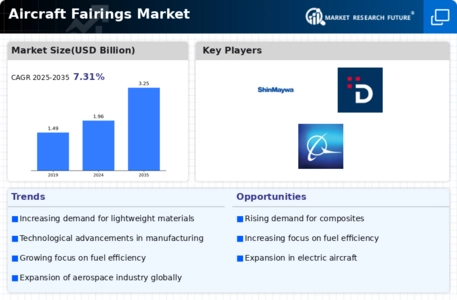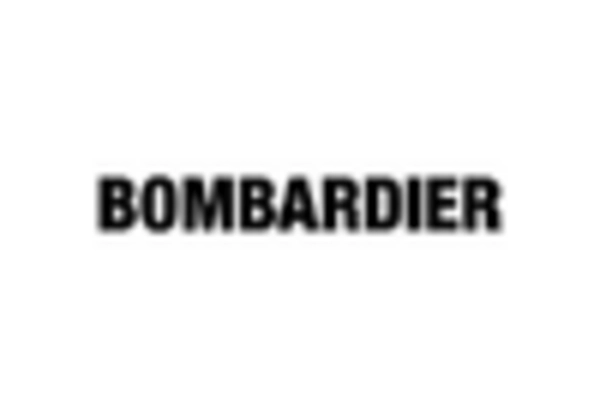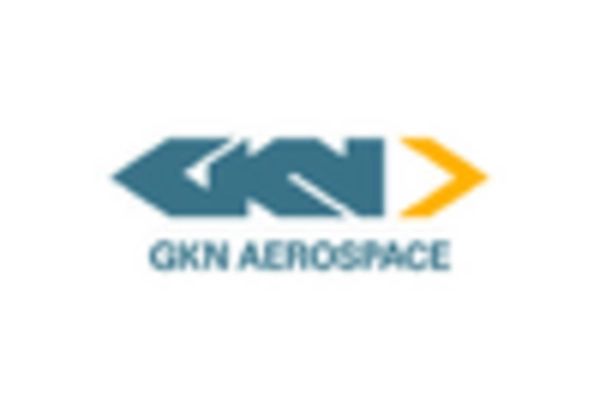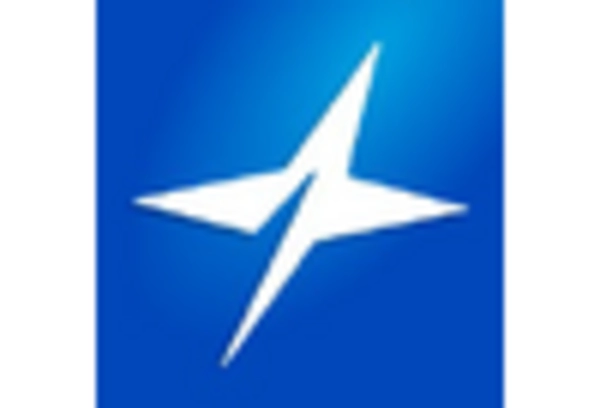-
EXECUTIVE SUMMARY
-
MARKET ATTRACTIVENESS ANALYSIS
-
USER
-
GLOBAL AIRCRAFT FAIRINGS MARKET, BY END
-
GLOBAL AIRCRAFT FAIRINGS MARKET, BY APPLICATION
-
GLOBAL
-
AIRCRAFT FAIRINGS MARKET, BY PLATFORM
-
BY MATERIAL
-
GLOBAL AIRCRAFT FAIRINGS MARKET,
-
GLOBAL AIRCRAFT FAIRINGS MARKET, BY REGION
-
MARKET
-
INTRODUCTION
-
MARKET DEFINITION
-
SCOPE OF THE STUDY
-
MARKET STRUCTURE
-
KEY BUYING CRITERIA
-
MARKET FACTOR INDICATOR
-
ANALYSIS
-
RESEARCH METHODOLOGY
-
RESEARCH PROCESS
-
PRIMARY
-
RESEARCH
-
SECONDARY RESEARCH
-
MARKET SIZE ESTIMATION
-
FORECAST MODEL
-
LIST OF ASSUMPTIONS
-
MARKET INSIGHTS
-
MARKET
-
DYNAMICS
-
INTRODUCTION
-
DRIVERS
- GROWING NUMBER OF
- INCREASING USE OF ADVANCED COMPOSITE MATERIALS IN
- RISING ADOPTION OF UAVS IN COMMERCIAL AND MILITARY
- ADOPTION OF 3D PRINTING IN AIRCRAFT FAIRING MANUFACTURING
- DRIVERS IMPACT ANALYSIS
-
AIRCRAFT DELIVERIES
-
AIRCRAFT FAIRINGS
-
APPLICATIONS
-
RESTRAINTS
- ISSUES RELATED
- COMPLEX MAINTENANCE PROCEDURES
- RESTRAINTS IMPACT ANALYSIS
-
TO RECYCLABILITY OF COMPOSITE MATERIALS
-
OPPORTUNITIES
-
MARKET/TECHNOLOGICAL
-
TRENDS
-
PATENT TRENDS
-
REGULATORY LANDSCAPE/STANDARDS
-
MARKET FACTOR ANALYSIS
-
SUPPLY CHAIN ANALYSIS
- R&D
- DISTRIBUTION & SALES
- POST-SALES MONITORING
-
MANUFACTURING
-
PORTER’S FIVE FORCES ANALYSIS
- THREAT OF NEW ENTRANTS
- BARGAINING POWER OF SUPPLIERS
- BARGAINING POWER OF BUYERS
- THREAT OF SUBSTITUTES
- INTENSITY OF RIVALRY
-
GLOBAL AIRCRAFT
-
FAIRINGS MARKET, BY END USER
-
INTRODUCTION
-
OEM
-
AFTERMARKET
-
GLOBAL AIRCRAFT FAIRINGS MARKET, BY APPLICATION
-
INTRODUCTION
-
COCKPIT
-
FUSELAGE
-
ENGINE
-
LANDING GEAR
-
FLIGHT
-
CONTROL SURFACE
-
WINGS
-
NOSE
-
GLOBAL AIRCRAFT FAIRINGS
-
MARKET, BY PLATFORM
-
INTRODUCTION
-
COMMERCIAL
-
MILITARY
-
GLOBAL AIRCRAFT FAIRINGS MARKET, BY MATERIAL
-
INTRODUCTION
-
COMPOSITE
-
METALLIC
-
OTHERS
-
GLOBAL AIRCRAFT FAIRINGS
-
MARKET, BY REGION
-
INTRODUCTION
-
NORTH AMERICA
- CANADA
-
US
-
EUROPE
- UK
- GERMANY
- FRANCE
- AUSTRIA
- RUSSIA
- REST OF EUROPE
-
ASIA-PACIFIC
- CHINA
- INDIA
- JAPAN
- SOUTH KOREA
- REST OF ASIA-PACIFIC
-
REST OF THE WORLD
- LATIN AMERICA
- MIDDLE EAST & AFRICA
-
COMPETITIVE
-
LANDSCAPE
-
COMPETITIVE OVERVIEW
-
COMPETITOR DASHBOARD
-
MAJOR GROWTH STRATEGIES IN THE GLOBAL AIRCRAFT FAIRINGS MARKET
-
COMPETITIVE
-
BENCHMARKING
-
MARKET SHARE ANALYSIS
-
LEADING PLAYER IN TERMS
-
OF NUMBER OF DEVELOPMENTS IN THE GLOBAL AIRCRAFT FAIRINGS MARKET
-
KEY
- PRODUCT LAUNCHES/SERVICE DEPLOYMENTS
- MERGERS&ACQUISITIONS
- JOINT VENTURES
-
DEVELOPMENTS & GROWTH STRATEGIES
-
COMPANY
-
PROFILES
-
KEY MARKET PLAYERS
-
(COMPANY OVERVIEW, PRODUCTS & SERVICES
-
OFFERED, FINANCIAL OVERVIEW, KEY DEVELOPMENTS, SWOT ANALYSIS, AND KEY STRATEGIES
-
TO BE COVERED FOR PUBLIC COMPANIES)
-
FACC AG
-
SHINMAYWA INDUSTRIES,
-
LTD.
-
STRATA MANUFACTURING
-
MALIBU AEROSPACE LLC
-
DAHER
-
AIRBUS S.A.S.
-
BOEING
-
CTRM SDN. BHD.
-
THE NORDAM GROUP LLC
-
AAR
-
OTHER PROMINENT PLAYERS
-
FDC COMPOSITES
-
AVCORP INDUSTRIES INC.
-
BARNES GROUP INC.
-
ROYAL ENGINEERED COMPOSITES
-
FIBER DYNAMICS, INC.
-
VERDANT
-
MCFARLANE AVIATION, INC.
-
KAMAN CORPORATION
-
ARNPRIOR
-
AEROSPACE, INC.
-
APPENDIX
-
REFERENCES
-
RELATED REPORTS
-
LIST OF ABBREVIATIONS
-
-
LIST OF TABLES
-
LIST
-
OF ASSUMPTIONS
-
MAJOR PATENTS GRANTED FOR AIRCRAFT FAIRINGS (2020-2030)
-
GLOBAL AIRCRAFT FAIRINGS MARKET, BY END USER, 2020-2030 (USD MILLION)
-
GLOBAL AIRCRAFT FAIRINGS MARKET, BY APPLICATION, 2020-2030(USD MILLION)
-
GLOBAL AIRCRAFT FAIRINGS MARKET, BY PLATFORM, 2020-2030 (USD MILLION)
-
GLOBAL AIRCRAFT FAIRINGS MARKET, BY MATERIAL, 2020-2030 (USD MILLION)
-
GLOBAL AIRCRAFT FAIRINGS MARKET, BY REGION, 2020-2030 (USD MILLION)
-
NORTH AMERICA: AIRCRAFT FAIRINGS MARKET, BY COUNTRY, 2020-2030(USD MILLION)
-
NORTH AMERICA: AIRCRAFT FAIRINGS MARKET, BY END USER, 2020-2030 (USD MILLION)
-
NORTH AMERICA: AIRCRAFT FAIRINGS MARKET, BY APPLICATION, 2020-2030 (USD
-
MILLION)
-
NORTH AMERICA: AIRCRAFT FAIRINGS MARKET, BY PLATFORM, 2020-2030
-
(USD MILLION)
-
NORTH AMERICA: AIRCRAFT FAIRINGS MARKET, BY MATERIAL,
-
US: AIRCRAFT FAIRINGS MARKET, BY END USER,
-
US: AIRCRAFT FAIRINGS MARKET, BY APPLICATION,
-
US: AIRCRAFT FAIRINGS MARKET, BY PLATFORM,
-
US: AIRCRAFT FAIRINGS MARKET, BY MATERIAL,
-
CANADA: AIRCRAFT FAIRINGS MARKET, BY END USER,
-
CANADA: AIRCRAFT FAIRINGS MARKET, BY APPLICATION,
-
CANADA: AIRCRAFT FAIRINGS MARKET, BY PLATFORM,
-
CANADA: AIRCRAFT FAIRINGS MARKET, BY MATERIAL,
-
EUROPE: AIRCRAFT FAIRINGS MARKET, BY COUNTRY,
-
EUROPE: AIRCRAFT FAIRINGS MARKET, BY END USER,
-
EUROPE: AIRCRAFT FAIRINGS MARKET, BY APPLICATION,
-
EUROPE: AIRCRAFT FAIRINGS MARKET, BY PLATFORM,
-
EUROPE: AIRCRAFT FAIRINGS MARKET, BY MATERIAL,
-
UK: AIRCRAFT FAIRINGS MARKET, BY END USER,
-
UK: AIRCRAFT FAIRINGS MARKET, BY APPLICATION,
-
UK: AIRCRAFT FAIRINGS MARKET, BY PLATFORM,
-
UK: AIRCRAFT FAIRINGS MARKET, BY MATERIAL,
-
GERMANY: AIRCRAFT FAIRINGS MARKET, BY END
-
USER, 2020-2030 (USD MILLION)
-
GERMANY: AIRCRAFT FAIRINGS MARKET, BY
-
APPLICATION, 2020-2030 (USD MILLION)
-
GERMANY: AIRCRAFT FAIRINGS MARKET,
-
BY PLATFORM, 2020-2030 (USD MILLION)
-
GERMANY: AIRCRAFT FAIRINGS MARKET,
-
BY MATERIAL, 2020-2030 (USD MILLION)
-
FRANCE: AIRCRAFT FAIRINGS MARKET,
-
BY END USER, 2020-2030 (USD MILLION)
-
FRANCE: AIRCRAFT FAIRINGS MARKET,
-
BY APPLICATION, 2020-2030 (USD MILLION)
-
FRANCE: AIRCRAFT FAIRINGS
-
MARKET, BY PLATFORM, 2020-2030 (USD MILLION)
-
FRANCE: AIRCRAFT FAIRINGS
-
MARKET, BY MATERIAL, 2020-2030 (USD MILLION)
-
AUSTRIA: AIRCRAFT FAIRINGS
-
MARKET, BY END USER, 2020-2030 (USD MILLION)
-
AUSTRIA: AIRCRAFT FAIRINGS
-
MARKET, BY APPLICATION, 2020-2030 (USD MILLION)
-
AUSTRIA: AIRCRAFT
-
FAIRINGS MARKET, BY PLATFORM, 2020-2030 (USD MILLION)
-
AUSTRIA: AIRCRAFT
-
FAIRINGS MARKET, BY MATERIAL, 2020-2030 (USD MILLION)
-
RUSSIA: AIRCRAFT
-
FAIRINGS MARKET, BY END USER, 2020-2030 (USD MILLION)
-
RUSSIA: AIRCRAFT
-
FAIRINGS MARKET, BY APPLICATION, 2020-2030 (USD MILLION)
-
RUSSIA: AIRCRAFT
-
FAIRINGS MARKET, BY PLATFORM, 2020-2030 (USD MILLION)
-
RUSSIA: AIRCRAFT
-
FAIRINGS MARKET, BY MATERIAL, 2020-2030 (USD MILLION)
-
REST OF EUROPE:
-
AIRCRAFT FAIRINGS MARKET, BY END USER, 2020-2030 (USD MILLION)
-
REST
-
OF EUROPE: AIRCRAFT FAIRINGS MARKET, BY APPLICATION, 2020-2030 (USD MILLION)
-
REST OF EUROPE: AIRCRAFT FAIRINGS MARKET, BY PLATFORM, 2020-2030 (USD
-
MILLION)
-
REST OF EUROPE: AIRCRAFT FAIRINGS MARKET, BY MATERIAL, 2020-2030
-
(USD MILLION)
-
ASIA-PACIFIC: AIRCRAFT FAIRINGS MARKET, BY COUNTRY,
-
ASIA-PACIFIC: AIRCRAFT FAIRINGS MARKET, BY
-
END USER, 2020-2030 (USD MILLION)
-
ASIA-PACIFIC: AIRCRAFT FAIRINGS
-
MARKET, BY APPLICATION, 2020-2030 (USD MILLION)
-
ASIA-PACIFIC: AIRCRAFT
-
FAIRINGS MARKET, BY PLATFORM, 2020-2030 (USD MILLION)
-
ASIA-PACIFIC:
-
AIRCRAFT FAIRINGS MARKET, BY MATERIAL, 2020-2030 (USD MILLION)
-
CHINA:
-
AIRCRAFT FAIRINGS MARKET, BY END USER, 2020-2030 (USD MILLION)
-
CHINA:
-
AIRCRAFT FAIRINGS MARKET, BY APPLICATION, 2020-2030 (USD MILLION)
-
TABLE 57
-
CHINA: AIRCRAFT FAIRINGS MARKET, BY PLATFORM, 2020-2030 (USD MILLION)
-
TABLE
-
CHINA: AIRCRAFT FAIRINGS MARKET, BY MATERIAL, 2020-2030 (USD MILLION)
-
TABLE
-
INDIA: AIRCRAFT FAIRINGS MARKET, BY END USER, 2020-2030 (USD MILLION)
-
TABLE
-
INDIA: AIRCRAFT FAIRINGS MARKET, BY APPLICATION, 2020-2030 (USD MILLION)
-
TABLE
-
INDIA: AIRCRAFT FAIRINGS MARKET, BY PLATFORM, 2020-2030 (USD MILLION)
-
TABLE
-
INDIA: AIRCRAFT FAIRINGS MARKET, BY MATERIAL, 2020-2030 (USD MILLION)
-
TABLE
-
JAPAN: AIRCRAFT FAIRINGS MARKET, BY END USER, 2020-2030 (USD MILLION)
-
TABLE
-
JAPAN: AIRCRAFT FAIRINGS MARKET, BY APPLICATION, 2020-2030 (USD MILLION)
-
TABLE
-
JAPAN: AIRCRAFT FAIRINGS MARKET, BY PLATFORM, 2020-2030 (USD MILLION)
-
TABLE
-
JAPAN: AIRCRAFT FAIRINGS MARKET, BY MATERIAL, 2020-2030 (USD MILLION)
-
TABLE
-
SOUTH KOREA: AIRCRAFT FAIRINGS MARKET, BY END USER, 2020-2030 (USD MILLION)
-
SOUTH KOREA: AIRCRAFT FAIRINGS MARKET, BY APPLICATION, 2020-2030 (USD
-
MILLION)
-
SOUTH KOREA: AIRCRAFT FAIRINGS MARKET, BY PLATFORM, 2020-2030
-
(USD MILLION)
-
SOUTH KOREA: AIRCRAFT FAIRINGS MARKET, BY MATERIAL,
-
REST OF ASIA-PACIFIC: AIRCRAFT FAIRINGS MARKET,
-
BY END USER, 2020-2030 (USD MILLION)
-
REST OF ASIA-PACIFIC: AIRCRAFT
-
FAIRINGS MARKET, BY APPLICATION, 2020-2030 (USD MILLION)
-
REST OF ASIA-PACIFIC:
-
AIRCRAFT FAIRINGS MARKET, BY PLATFORM, 2020-2030 (USD MILLION)
-
REST
-
OF ASIA-PACIFIC: AIRCRAFT FAIRINGS MARKET, BY MATERIAL, 2020-2030 (USD MILLION)
-
REST OF THE WORLD: AIRCRAFT FAIRINGS MARKET, BY REGION, 2020-2030 (USD
-
MILLION)
-
REST OF THE WORLD: AIRCRAFT FAIRINGS MARKET, BY END USER,
-
REST OF THE WORLD: AIRCRAFT FAIRINGS MARKET,
-
BY APPLICATION, 2020-2030 (USD MILLION)
-
REST OF THE WORLD: AIRCRAFT
-
FAIRINGS MARKET, BY PLATFORM, 2020-2030 (USD MILLION)
-
REST OF THE
-
WORLD: AIRCRAFT FAIRINGS MARKET, BY MATERIAL, 2020-2030 (USD MILLION)
-
TABLE
-
LATIN AMERICA: AIRCRAFT FAIRINGS MARKET, BY END USER, 2020-2030 (USD MILLION)
-
LATIN AMERICA: AIRCRAFT FAIRINGS MARKET, BY APPLICATION, 2020-2030 (USD
-
MILLION)
-
LATIN AMERICA: AIRCRAFT FAIRINGS MARKET, BY PLATFORM, 2020-2030
-
(USD MILLION)
-
LATIN AMERICA: AIRCRAFT FAIRINGS MARKET, BY MATERIAL,
-
MIDDLE EAST & AFRICA: AIRCRAFT FAIRINGS
-
MARKET, BY END USER, 2020-2030 (USD MILLION)
-
MIDDLE EAST & AFRICA:
-
AIRCRAFT FAIRINGS MARKET, BY APPLICATION, 2020-2030 (USD MILLION)
-
TABLE 86
-
MIDDLE EAST & AFRICA: AIRCRAFT FAIRINGS MARKET, BY PLATFORM, 2020-2030 (USD
-
MILLION)
-
MIDDLE EAST & AFRICA: AIRCRAFT FAIRINGS MARKET, BY MATERIAL,
-
THE MOST ACTIVE PLAYERS IN THE GLOBAL AIRCRAFT
-
FAIRINGS MARKET
-
CONTRACTS & AGREEMENTS
-
MERGERS &
-
ACQUISITIONS
-
PRODUCT/SERVICE DEVELOPMENTS
-
EXPANSIONS
-
& INVESTMENTS
-
JOINT VENTURES & PARTNERSHIPS
-
-
LIST OF FIGURES
-
MARKET SYNOPSIS
-
GLOBAL AIRCRAFT FAIRINGS
-
MARKET: MARKET ATTRACTIVENESS ANALYSIS
-
GLOBAL AIRCRAFT FAIRINGS MARKET
-
ANALYSIS, BY END USER
-
GLOBAL AIRCRAFT FAIRINGS MARKET ANALYSIS, BY
-
APPLICATION
-
GLOBAL AIRCRAFT FAIRINGS MARKET ANALYSIS, BY PLATFORM
-
GLOBAL AIRCRAFT FAIRINGS MARKET ANALYSIS, BY MATERIAL
-
GLOBAL
-
AIRCRAFT FAIRINGS MARKET ANALYSIS, BY REGION
-
GLOBAL AIRCRAFT FAIRINGS
-
MARKET: MARKET STRUCTURE
-
KEY BUYING CRITERIA FOR AIRCRAFT FAIRINGS
-
TECHNOLOGIES
-
RESEARCH PROCESS OF MRFR
-
NORTH AMERICA:
-
MARKET SIZE & MARKET SHARE, BY COUNTRY, 2020 VS 2030
-
EUROPE:
-
MARKET SIZE & MARKET SHARE, BY COUNTRY, 2020 VS 2030
-
ASIA-PACIFIC:
-
MARKET SIZE & MARKET SHARE, BY COUNTRY, 2020 VS 2030
-
REST OF
-
THE WORLD: MARKET SIZE & MARKET SHARE, BY REGION, 2020 VS 2030
-
FIGURE 15
-
MARKET DYNAMICS OVERVIEW
-
DRIVERS IMPACT ANALYSIS: GLOBAL AIRCRAFT
-
FAIRINGS MARKET
-
RESTRAINTS IMPACT ANALYSIS: GLOBAL AIRCRAFT FAIRINGS
-
MARKET
-
PORTER’S FIVE FORCES ANALYSIS OF THE GLOBAL AIRCRAFT
-
FAIRINGS MARKET
-
SUPPLY CHAIN: GLOBAL AIRCRAFT FAIRINGS MARKET
-
GLOBAL AIRCRAFT FAIRINGS MARKET SHARE, BY END USER, 2020 (% SHARE)
-
GLOBAL AIRCRAFT FAIRINGS MARKET SHARE, BY PLATFORM, 2020 (% SHARE)
-
GLOBAL AIRCRAFT FAIRINGS MARKET SHARE, BY APPLICATION, 2020 (% SHARE)
-
GLOBAL AIRCRAFT FAIRINGS MARKET SHARE, BY MATERIAL, 2020 (% SHARE)
-
GLOBAL AIRCRAFT FAIRINGS MARKET SHARE, BY REGION, 2020 (% SHARE)
-
NORTH AMERICA: AIRCRAFT FAIRINGS MARKET SHARE, BY COUNTRY, 2020 (% SHARE)
-
EUROPE: AIRCRAFT FAIRINGS MARKET SHARE, BY COUNTRY, 2020 (% SHARE)
-
ASIA-PACIFIC: AIRCRAFT FAIRINGS MARKET SHARE, BY COUNTRY, 2020 (% SHARE)
-
REST OF THE WORLD: AIRCRAFT FAIRINGS MARKET SHARE, BY REGION, 2020 (%
-
SHARE)
-
COMPETITOR DASHBOARD: GLOBAL AIRCRAFT FAIRINGS MARKET
-
FIGURE
-
CAPITAL MARKET RATIO AND FINANCIAL MATRIX
-
CONTRACTS & AGREEMENTS:
-
THE MAJOR STRATEGY ADOPTED BY KEY PLAYERS IN THE GLOBAL AIRCRAFT FAIRINGS MARKET
-
BENCHMARKING OF MAJOR COMPETITORS
-
MAJOR SERVICE PROVIDERS’
-
MARKET SHARE ANALYSIS, 2020

















Leave a Comment